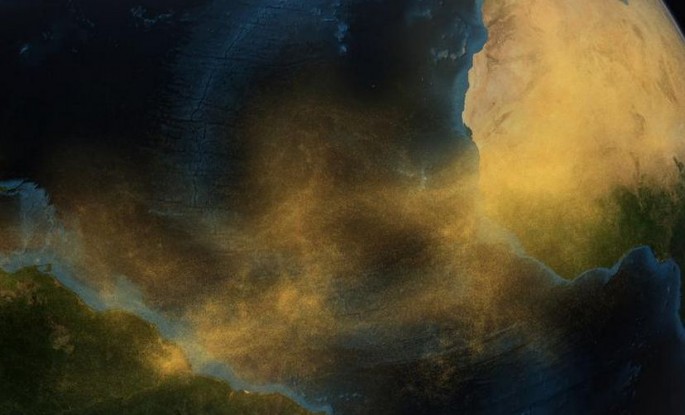What connects the parched and dry Sahara Desert in Africa with the lush and alive Amazon rainforests in Brazil?
The answer is dust.
More specifically, millions of tons of nutrient rich dust from the Sahara that crosses the Atlantic Ocean on high winds and fertilizes and keeps alive the Amazon rainforests every year. Saharan dust carries phosphorous, one of the most abundant natural fertilizers on Earth.
For the first time, scientists have accurately estimated the amounf of phosphorus makes this trans-Atlantic journey. The Sahara deposits some 22,000 tons of phosphorous per year on the Amazon, said a new paper published Feb. 24 in the journal Geophysical Research Letters.
Sahara phosphorus accounts for just 0.08% of the 27.7 million tons of Saharan dust that settles in the Amazon every year, said Phys.org. This quantity, however, ensures the survival of the plants, animals and microbial life in this vast ecosystem.
"We know that dust is very important in many ways. It is an essential component of the Earth system. Dust will affect climate and, at the same time, climate change will affect dust," said lead author Hongbin Yu, an associate research scientist at the Earth System Science Interdisciplinary Center (ESSIC), a joint center of the University of Maryland and NASA's Goddard Space Flight Center.
Of special interest to researchers is the dust picked up from the Bodélé Depression in Chad. This ancient lake bed has huge deposits of dead microorganisms loaded with phosphorus.
Amazonian soils are short on phosphorus while other critical nutrients are washed away by the Amazon's frequent and heavy rainfall. The entire Amazon ecosystem, therefore, depends on Saharan dust to replenish lost soil nutrients.
Researchers analyzed dust transport estimates based on data collected by NASA's Cloud-Aerosol Lidar and Infrared Pathfinder Satellite Observation (CALIPSO) satellite between 2007 and 2013.
They focused on Saharan dust transported across the Atlantic Ocean to South America and beyond because it's the largest transport of dust on the Earth.
The pattern varies widely every year. There was an 86 percent change between the highest amount of dust transported in 2007 and the lowest in 2011, for example.
"This is a small world, and we're all connected together," Yu said.



























